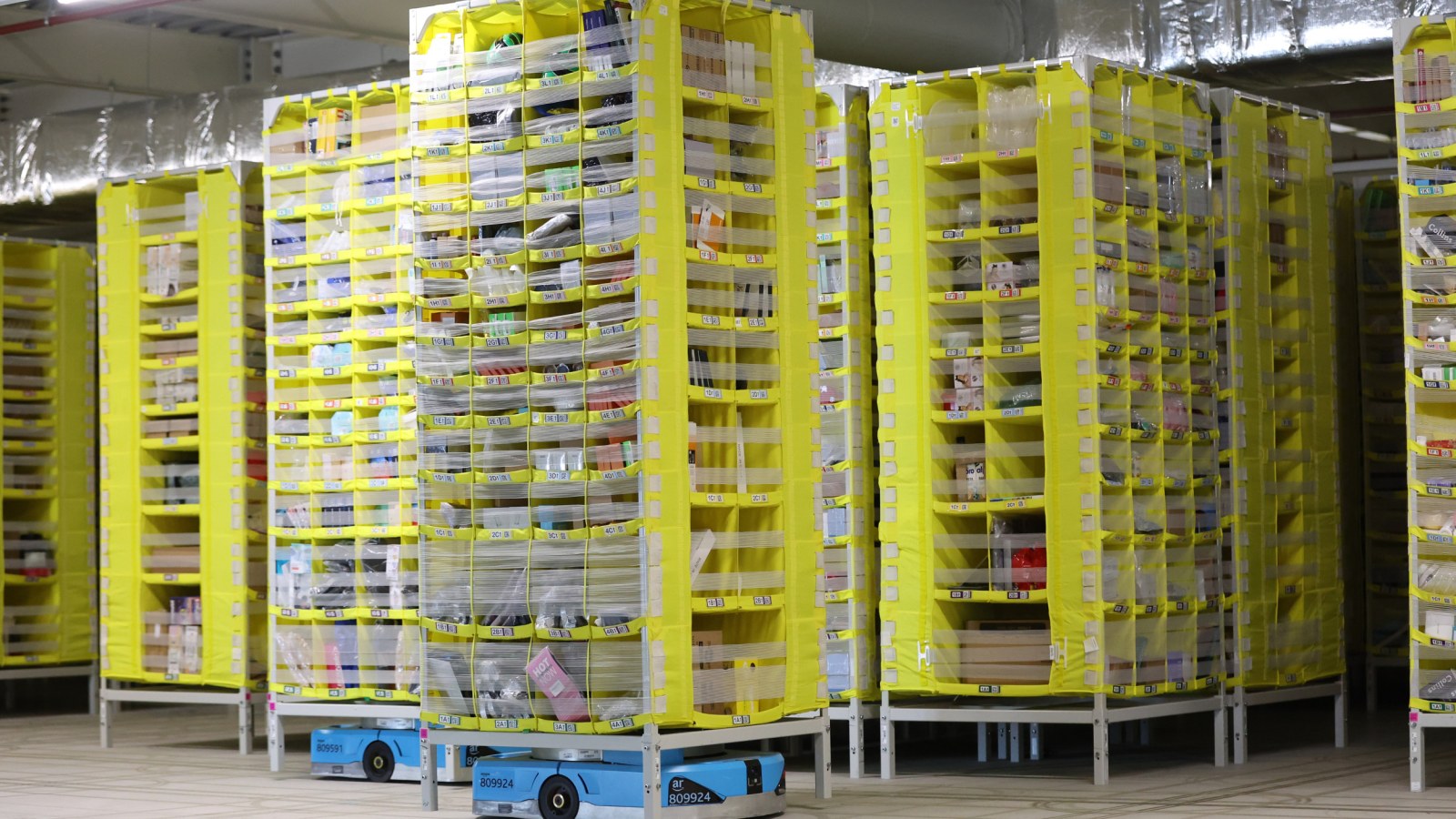By Aman Kidwai
Copyright newsweek

While new technology is reshaping office work and software development, it is also changing the nature of physical, on-site work. In the logistics and manufacturing industries, new warehouse technology and advancements in hardware development are improving employee efficiency and reducing physical strain, at companies of all sizes.Matt Wicks, vice president and general manager at Zebra Technologies, told Newsweek, “Generally speaking, when these companies look to automate, it’s more about like trying to grow their business at a faster rate, or it is growing at a faster rate, and they’re looking for technology to help them be more efficient, more economical, and help their businesses scale.”Companies are looking to technological solutions in part, Wick said, due to the challenges involved in hiring or capacity limitations of their facility.”It has been a recurring theme throughout my entire career,” Wicks said, reflecting on more two decades in automation and robotics. “At some point, they reach a breaking point where they can’t fit that many people in their facility or find enough people to do the work. That’s where they look to automation to augment their business.”The technology for making automation systems and robots that can handle arduous manual labor also is becoming more accessible. Costs are decreasing for cameras, chips and sensors to help physical workplaces on matters of safety, accountability and efficiency. AI-powered tech has been used in warehouses for predictive maintenance and inventory forecasting and is also used to help people and robots move items from storage into shipping.Startups like Arena want to enable further innovation in this kind of machinery. Founded by entrepreneur Pratap Ranade, who sold his last business to Palantir in 2016, the company’s product, called Atlas, is meant to resemble the fictional robot assistants sometimes seen in science fiction movies. Arena’s technology is built to support testing, debugging and optimization for hardware like the machinery used in warehouses or the mechanical components of an automobile or space shuttle.Arena aims to bring hardware innovation to more people and allow inventive machinery to flourish, in the same way that the internet enabled an explosion of software services and apps.With a PhD in applied physics from Columbia, Ranade said that in his time as a student, most of his classmates either were in finance or major tech companies like Google or Meta. “This is a common pattern, right? We basically take our best and brightest minds, ambitious folks who want to change the world, and then we make them optimize ads. And we’ve been doing this for a long time,” he said.With the market for software engineering jobs in decline, especially for entry-level roles, Ranade said, the hardware space may provide more opportunity in the future. (Hardware in this case encompasses aerospace, medical devices, household appliances, and commercial machinery.) Arena’s technology aims to help the makers of machinery get faster feedback on their systems so that they can identify bugs in the process faster.”There’s clear opportunity now in hardware,” Ranade continued. “AI in some ways is commoditizing software engineering. It’s a lot easier to code… Macroeconomically, with reshoring in the U.S. and global trade getting kind of inverted, companies are trying to take control of their own supply chains.”Warehouse Tech Promises Safety and EfficiencyBecause logistics are a key tenet of their corporate strategies, global giants like Amazon and Walmart have used robots and automation for decades. Amazon has been testing new technology to reduce its fulfillment costs, while continuing to deploy hundreds of thousands of mobile robots and robot arms across its global operations. A new Walmart distribution center in South Carolina plans to double the volume of a traditional distribution center with the help of automation.”This has completely changed how we do business,” Tye Brady, chief technologist at Amazon Robotics, told the Financial Times. ”[And] it’s just the beginning.” The Financial Times also notes the opposition of labor advocates, who say that the new automation technology creates heightened productivity expectations that are not always easy to reach. A U.S. Senate committee report, in fact, found a higher incidence of accidents in Amazon warehouses than the industry average.Zebra Technologies offers a mobile robotic fulfillment solution that includes handheld devices for warehouse workers who are picking and sorting inventory to be shipped to customers.Wicks said, “Instead of a piece of paper, we have handheld devices that help orchestrate that picking operation with a robotic solution. It tells them where to go pick, what to pick, and how many. Then, instead of having a cart that they’re wheeling around, we have a robot or a series of robots, that essentially go meet the picker…Then the robot drives to the next position.”Efficiency comes from right-sizing boxes and outlining employees’ walking paths on the floor. “We orchestrate that whole operation, from receiving the orders in optimizing what’s the right pick path those workers how to coordinate and orchestrate the robots alongside of the workers,” he added. And when warehouse workers aren’t required to move heavy objects, and are moving fewer objects in general, they report less physical stress from their jobs.Like many others in different industries, Wicks emphasized the role of strong change management strategies for implementing and driving the adoption of new technology. “It’s not just a matter of, ‘hey, just go throw it out there and AI fixes everything’,” Wicks said. “There’s a lot of this human element.”Some companies have designated automation leaders to help manage the implementation and adoption.”The majority of the conversation about deploying our robotics solution was just about change management and working with expectations,” Wicks said. “It gets down to things like floor space, the hygiene of the facility, [so] I really appreciate the experience of the individuals on these customer sites, because they are change management experts. They understand the automation, and then they can also explain it to their staff.”New Robots and Robot-MakersBefore its April 2025 launch, Arena was being tested by aerospace, robotics, automobile and defense manufacturers, companies that have high safety standards and are pushing technology to its limits. Ranade envisions a world where new machines are invented to make household life easier, the same way that refrigerators, dishwashers and washing machines did in the past.”You’ll have robots folding your laundry and taking care of your baby,” he said.Atlas has two parts: a software platform and a visual component. Arena’s solution has successfully identified failure risks without having to physically test machinery, Ranade said. “You’re seeing stuff in virtual testing now that you would have caught in real life,” he explained.Ranade believes that improving the testing and issue identification–a step that used to take up so much of his time as an engineer–will enable final products to be released faster and by smaller companies.”If your REPL loop (the time to run and test technology) is three, six months long, that just compounds the cost and extends these hardware timelines, which can take decades,” Ranade said.Arena aims to provide value by helping companies to avoid catastrophic machine failures and reduce the effort necessary to complete safety and maintenance. Ranade said they have also driven increased per-watt performance of chips for semiconductor manufacturers.”If economically you could afford, which you can’t afford right now, to have a test engineer on every aircraft or on every car…this is where I get super excited, because we’re talking about AI saving people time and accelerating outcomes,” Ranade said. “Which is very important, very practical, and revenue-generating.”



